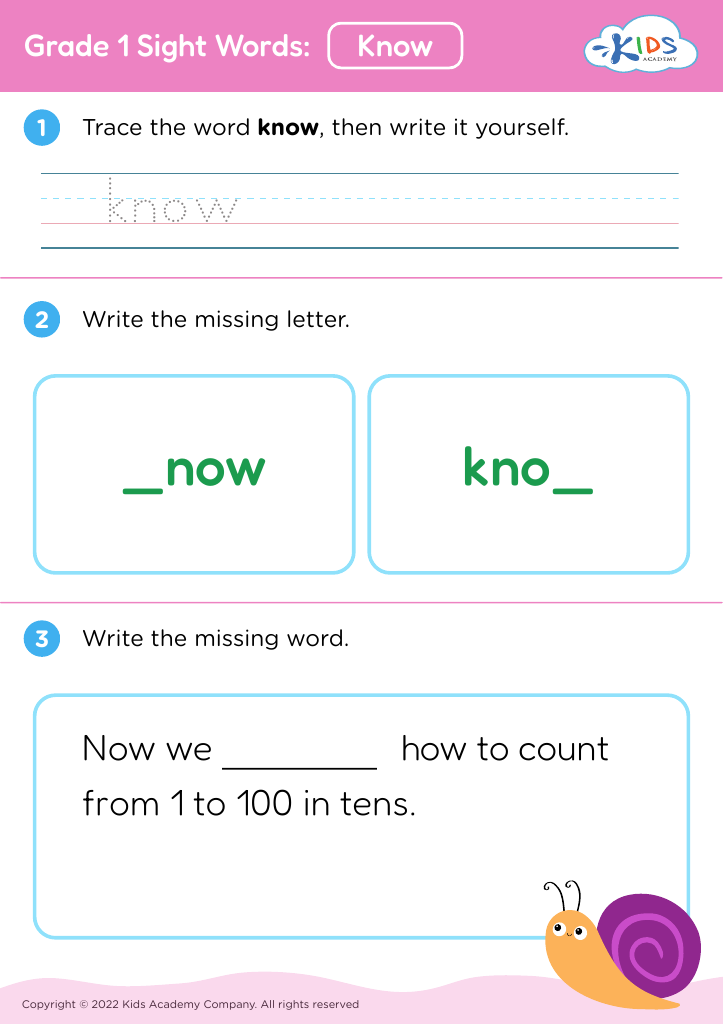Fine motor skills (connecting dots) Worksheets for Kids
1 filtered results
-
From - To
Question/Answer
What does the Fine motor skills (connecting dots) skill mean when it comes to Grade 1 Sight Words learning?
The Fine motor skills (connecting dots) skill in the context of Grade 1 Sight Words learning involves activities where children connect dots to form letters or words, enhancing their hand-eye coordination and dexterity. This practice supports the recognition and writing of sight words, crucial for reading fluency at this grade level.
Why is the Fine motor skills (connecting dots) skill important for Grade 1 students?
Fine motor skills, such as connecting dots, are crucial for Grade 1 students because they lay the foundation for handwriting, drawing, and other precise movements. Developing these skills enhances hand-eye coordination, promotes attention to detail, and supports academic tasks like writing and manipulating small objects, contributing to overall educational success and independence in daily activities.
What are some effective activities to train students’ Fine motor skills (connecting dots) skill when teaching them about Sight Words?
To train students' fine motor skills while teaching Sight Words, consider activities like creating sight word dot-to-dot puzzles, where each dot represents a letter in a sight word. Also, engaging students in tracing sight words with different materials such as sand, rice, or shaving cream can be effective.

.jpg)











